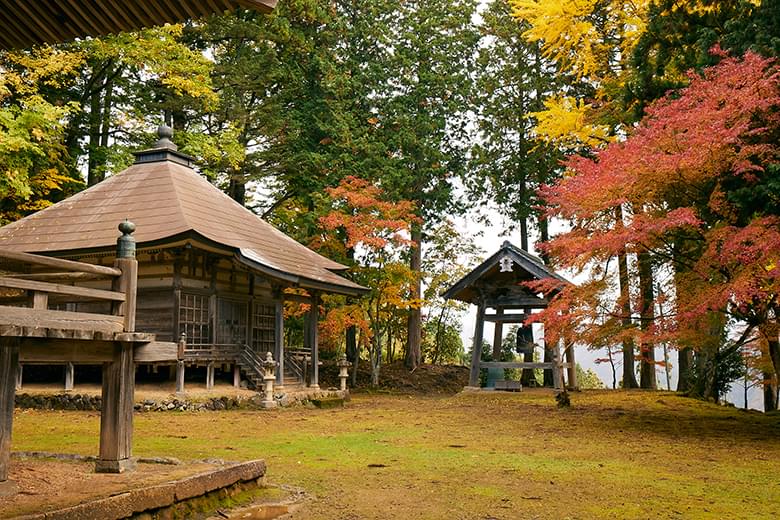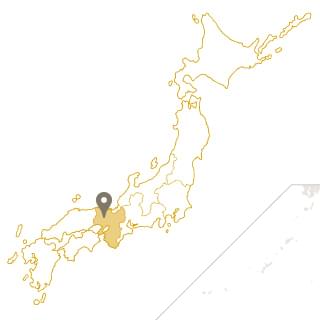Located in the mountainous northern part of Kyoto Prefecture, Fukuchiyama and Ayabe are a world away from the tight, urban quarters of central Kyoto. Board an express train from Kyoto Station, and in less than 80 minutes you’ll be transported to these spacious and tranquil countryside cities.
Fukuchiyama is an old town that grew around Fukuchiyama Castle, and is home to well-maintained traditional buildings and a majestic Shinto shrine that is among Japan’s oldest. The neighboring town of Ayabe developed as a producer of silk, and today the rural landscape dotted with the high-peaked roofs of country homes offers numerous trekking routes and views of scenic temples.
Dine on Kamosuki, a Fukuchiyama Specialty
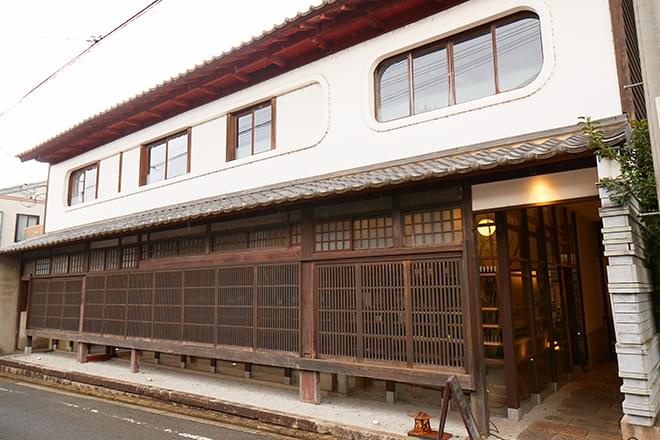
Wooden latticed windows and white plaster walls on the exterior of this restaurant in Fukuchiyama hint at something special, and indeed, the interior does not disappoint. Stepping in through the entrance, you’ll find a beautifully renovated old machiya townhouse from the Meiji era (1868-1912) that combines a stylish ground-floor café and bar, an intimate, softly-lit, wood-paneled first floor dining room, and traditional tatami seating upstairs.
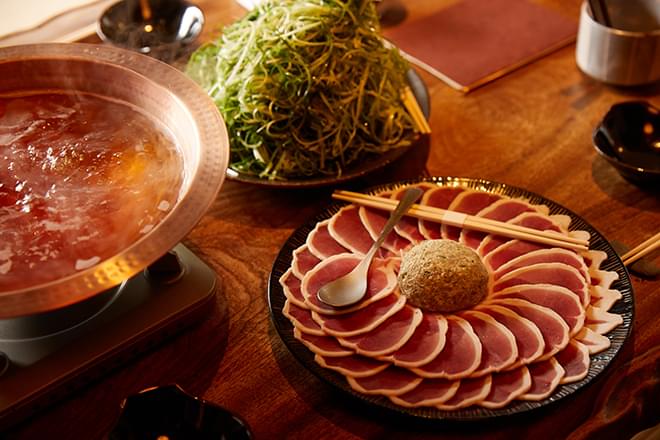
While there are many tempting items on the menu, Torinago Yanagimachi’s calling card is kamosuki. This version of sukiyaki is served with thin slices of raw duck meat and a small mountain’s worth of chopped green Kujo onions, both of which are locally sourced. Lightly cook the slices of duck in the simmering broth and green onions, then pair them together in a savory bite as you appreciate the tasteful surrounding décor.
- Name:
- Torinago Yanagimachi
- Address:
- 21 Shimoyanagi-cho, Fukuchiyama, Kyoto
- Tel:
- 0773-22-1809
- Opening hours (restaurant):
- Lunch 11:30 a.m. - 2:30 p.m. (Last order 2:00 p.m.)
Dinner 6:00 p.m. - 11:00 p.m. (Last order 10:00 p.m.)
*Sundays and public holidays 6:00 p.m. - 10:00 p.m. (Last order 9:00 p.m.)
- Closed:
- December 31 - January 4
Stroll Through the Peaceful Grounds of an Ancient Shrine
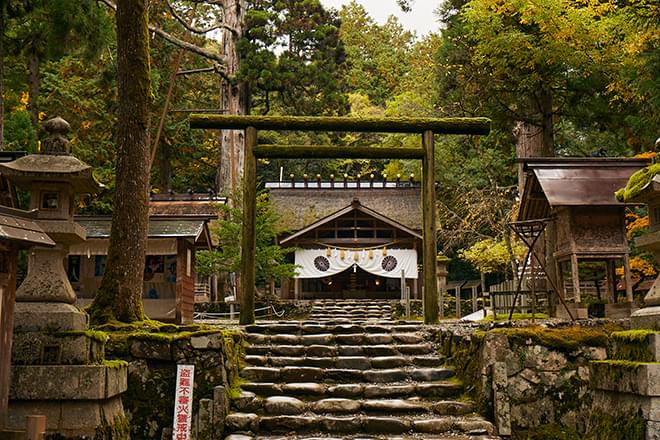
bear witness to this shrine’s history.
Surrounded by forest in the countryside outside Fukuchiyama City, Moto Ise Naiku Kotai Shrine has existed for more than two millennia. It reportedly predates 2,000-year-old Ise Jingu shrine by about 54 years, having enshrined the Japanese sun goddess Amaterasu before she was worshipped at Ise.

After walking up the tree-lined path to the shrine, the sight unfolding before your eyes underscores the spiritual significance and deep history. A round, wooden torii gate along with surrounding stone walls and lanterns are covered in green moss. The thatched-roof gohonden, or main hall, is flanked by thick, towering Japanese cedars, one of which is a 2,000-year-old goshinboku sacred tree.

Passing through the torii gate, take some time to worship, or just appreciate, the simple yet elegant design of the gohonden, as well as the 80 smaller wooden shrines nearby. A short 200 meter path leading beyond takes you to a viewpoint for Mount Himurodake, a small, pyramid-shaped sacred mountain with primeval forest said to have once hosted the shrine on its summit.
Visit Fukuchiyama Castle in Samurai Armor
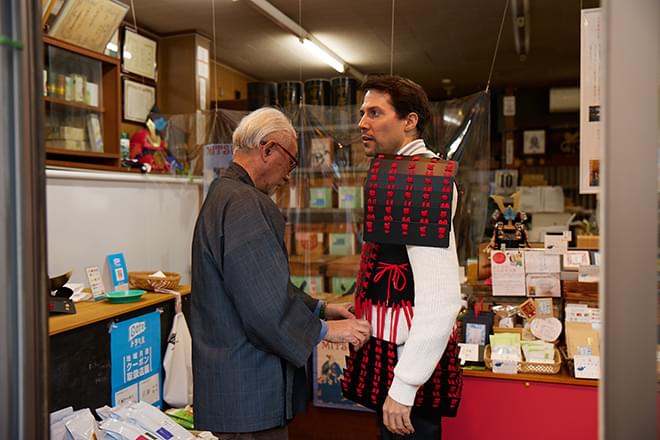
Situated prominently on a small hill with its brown wood siding, white walls, and ornate tile roof, Fukuchiyama Castle’s reconstructed castle keep stands as a visible reminder of the town’s roots. The structure is open to the public, and while a simple visit may be memorable, striding up to the ramparts in samurai armor will make for an unforgettable and highly entertaining experience!
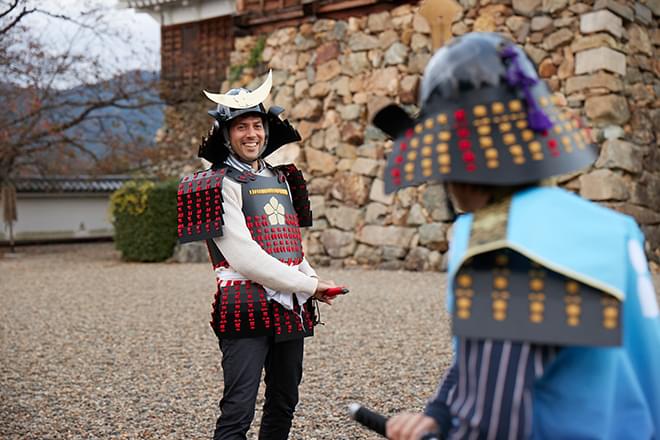
In olden days, real metal armor would have weighed around 20 kilograms. Fortunately, the owner of nearby tea vendor Yamashiroya Chaho has put together a handmade, yet very authentic-looking suit made of much lighter, modern materials—namely, plastic. Walking out of his shop on the way to the castle, you’ll likely draw some surprised glances from passing cars and onlookers!
- Organization Name:
- Yamashiroya Chaho
- Address:
- 71 Naiki, Fukuchiyama, Kyoto
- Tel:
- 0773-22-3005
- Opening hours:
- 10 a.m. - 6 p.m.
- Activity:
- Armor-wearing Experience
Splurge on Sweets Made with Famous Tamba Chestnuts
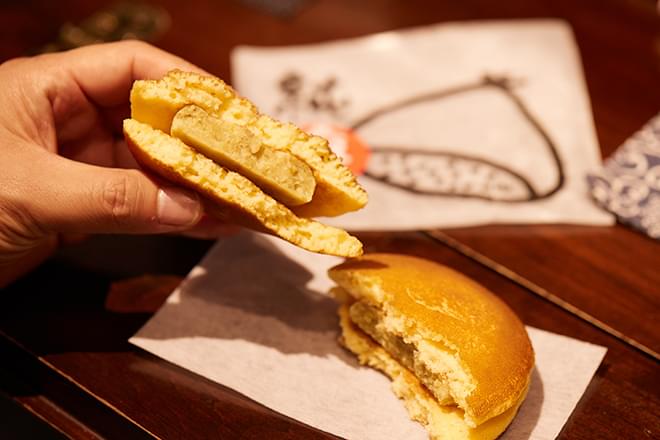
Fukuchiyama’s Adachi Otoemon specializes in Western-style sweets made with high-quality Tamba-kuri (Tamba chestnuts). The mountainous Tamba region includes Fukuchiyama and Ayabe among other cities, and the large chestnuts produced here are so famous that in Japan’s feudal days, they were accepted as a substitute for the annual rice tax.
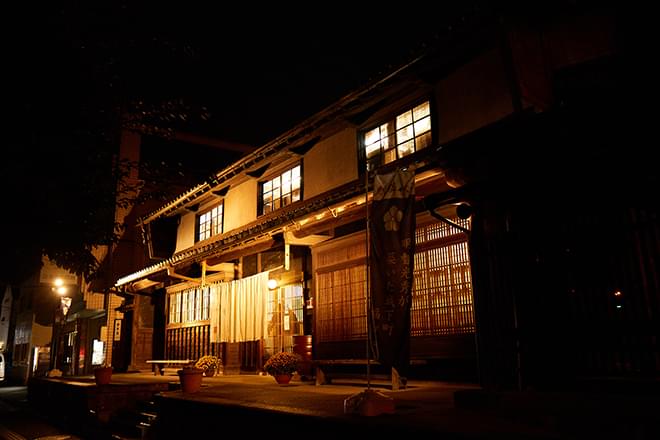
Adachi Otoemon crafts delicious dessert terrines and pound cakes incorporating generous amounts of the large, whole chestnuts. They also offer a variety of other baked goods including Earl Grey tea cakes, as well as gelato and chestnut dorayaki (100% chestnut filling between two slices of sweet fluffy pancakes). While perusing their product lineup, take some time to appreciate the shop itself—a former residence built during the Taisho and Meji eras that is designated as one of Kyoto Prefecture’s Tangible Cultural Assets.
- Name:
- Adachi Otoemon
- Address:
- 44-18 Naiki, Fukuchiyama, Kyoto
- Tel:
- 0773-24-2043
- Opening hours:
- 9 a.m. - 6:30 p.m.
- Closed:
- New Year’s Day
Enjoy a Leisurely Stay in a Peaceful Farmhouse
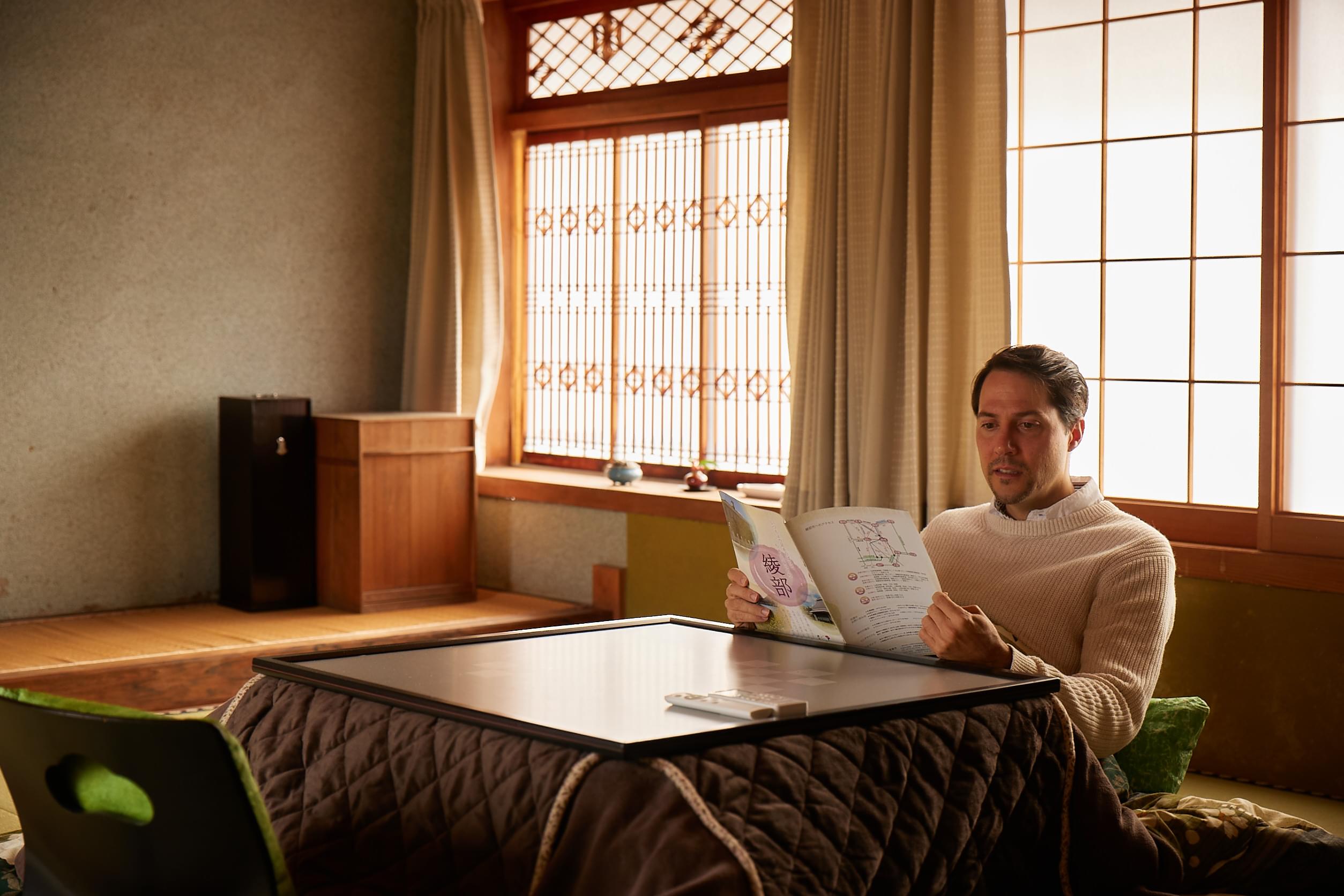
Origin Guest House is the epitome of what a countryside stay should be. A picture-perfect natural setting. Hearty home-cooked meals. Kind-hearted farmers. Over eight years ago, guesthouse operator and farmer Yasuko Kashiwabara gave up the bustle of crowded Osaka, seeking a more relaxed and healthy way of life for her mother and young daughter. She found a little bit of heaven on earth in Kyoto’s Ayabe.
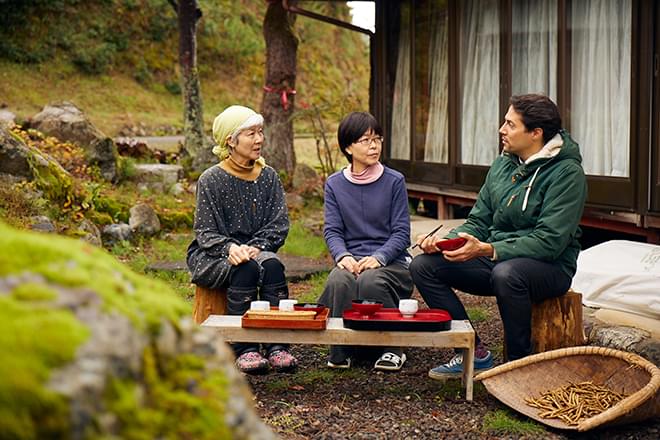
Nestled in a lush valley, Kashiwabara’s guesthouse is a charming old farmhouse with tatami mats, futons, and cozy kotatsu heated tables to warm up under on colder evenings. Kashiwabara and her mother prepare healthy meals in their open kitchen, served with generous helpings of home-grown vegetables and other local ingredients.
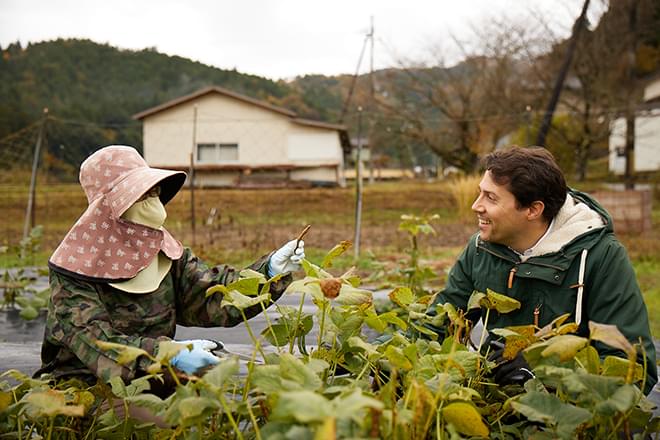
Wake up early enough and you may spot deer in the fields nearby, or even a light fog hanging in the valley, occasionally obscuring, then revealing the surrounding forested hills. Then after breakfast, walk with Kashiwabara out to her small field to help harvest some azuki red beans. Later, Kashiwabara and her mother will be happy to share up some of their homemade sweets made with azuki, and perhaps the secrets to their excellent meals.
- Name:
- Origin Guest House
- Address:
- 7 - 1 Mukaizumi, Mutsuyoricho, Ayabe, Kyoto
- Tel:
- 080-9128-0888
- Email:
- nagomi.or2018@gmail.com
Tour a Local Sake Brewery
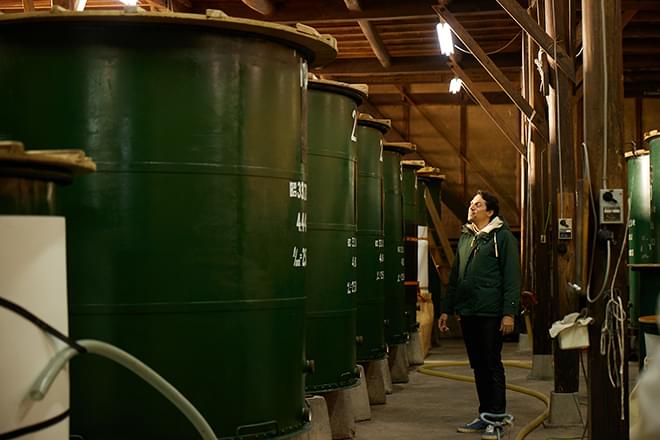
Wakamiya Shuzo is a small brewery in Ayabe that was founded nearly 100 years ago. Its name comes from the fact that the water for sake was initially sourced from Wakamiya Jinja, a Shinto shrine just across the nearby river. The flagship label, Ayakomachi, is derived from Ayabe’s past as a silk-producing town, and indeed, some of the brand paraphernalia features a young woman weaving silk.

Over a century later, the brewery still prides itself on making quality, handmade Japanese sake every winter, and the head of the company, Mr. Yasuo Kiuchi, personally serves as toji or brewmaster. Standing near Wakamiya Shuzo’s retro bottling equipment and collection of old tools, you’ll learn some of the basics about brewing sake, thanks to samples of polished rice and other materials. Depending on the season, you may even get to tour the brewery too.
